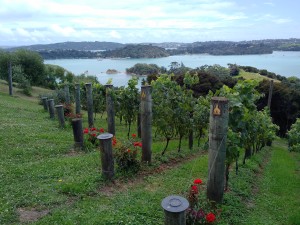Food-Navigator’s Special Edition: Food for kids!
I greatly enjoy Food-Navigator’s collections of articles on specific topics. Here’s one on marketing foods to kids.
While there is some evidence that the tide may now be turning on childhood obesity, 8.4% of US 2-5 year-olds; 17.7% of 6-11 year-olds and 20.5% of 12-19-year-olds are still obese, and many are lacking in essential nutrients from potassium, dietary fiber and calcium, to vitamin D. So how can the food industry respond to these concerns and develop more nutritious, but appealing snacks, meals and beverages for kids?
- SPONSORED LINK: The Booming Kids’ Food & Beverage Market: Parents are looking for healthier options for their children, and smart food and beverage manufacturers are listening. See how to gain parents’ attention and innovate in the children’s food & beverage space… Click Here
- 8 healthy food trends to watch in 2016 that could influence children’s eating:The shift towards cleaner, more nutrient dense foods will continue to spread in the US in the coming year with parents increasingly looking for healthy options for the whole family – including picky children, who in generations past might have been served chicken nuggets or mac and cheese instead of baked chicken and veggies. .. Read
- True Drinks strikes budget-friendly balance between marketing AquaBall to kids and parents: A common conundrum for marketers of children’s food and beverages is how to engage two sets of stakeholders without doubling the budget. .. Read
- Mobile app aims to help children pick healthy, portion-controlled food: Ensuring children have healthy options in their lunches and for snacks is one way to help them fight obesity, but for the times when they select their own food at restaurants and friends’ houses, a new app and coaching program from Kurbo Health Inc. can help them eat right. .. Read
- Once Upon a Farm: In 3-5 years, every baby food section in the country will have a refrigerator: High-pressure-processing (HPP) – which gave birth to the super-premium juice category – will also play a disruptive role in the baby food market in the next five years, predict the founders of Once Upon a Farm, a new baby food brand in a pouch that will be merchandised in the chiller… Read
- Pure Spoon CEO: HPP is going to turn the baby food category on its head: It won’t happen overnight, but the future of babyfood is in the chiller, predicts one Texas-based entrepreneur pioneering the application of high pressure processing (HPP) in a category she claims is ripe for disruption… Read
- Plum Organics sales surge 44% in 2015 as ‘food-forward’ formulations tap into needs of Millennial shoppers: Dollar sales of Plum Organics surged 44.2% in measured channels* in the past 52 weeks, 3.8 times the average rate of growth for brands in the organic baby food segment, says the company, which has secured a 7.2% share of the $1.6bn US baby food and snacks category… Read
- Continual evolution is key to survival in competitive food market, Momme Meals exec says: To make it in the highly competitive food and beverage segment, startups need to listen to consumers and evolve to meet changing demands – even if that means letting go of their “baby,” says the founder of Momme Meals. .. Watch now
- Go Gourmet helps pouches grow-up from baby food to snacks for school-children: Go Gourmet wants to “up the ante” in the applesauce and fruit cup aisle with its “superfood snack” Slammers – premium fruit and veggie purees for school-aged children in pouches that pose a triple threat with taste, nutrition and personality, says CEO Michael Watt. .. Read
- Back to Nature Foods Co. repositions SnackWell’s as a “free-from” line: Back to Nature Foods Co.’s revitalization of the recently acquired iconic SnackWell’s brand is an example of how established companies can refresh aging brands that are struggling to better compete with new products from disruptive startups… Watch now
- Healthy NPD should be the starting point for kids’ food: The ‘good for you’ trend in children’s food is growing, and small companies would do well to focus on healthy healthy new product development in order to compete with big players who have the money to reformulate and rebrand, says one analyst… Read
Addition, February 3: A reader reminds me that Food-Navigator published a guide to creating successful children’s brands a couple of months ago.







